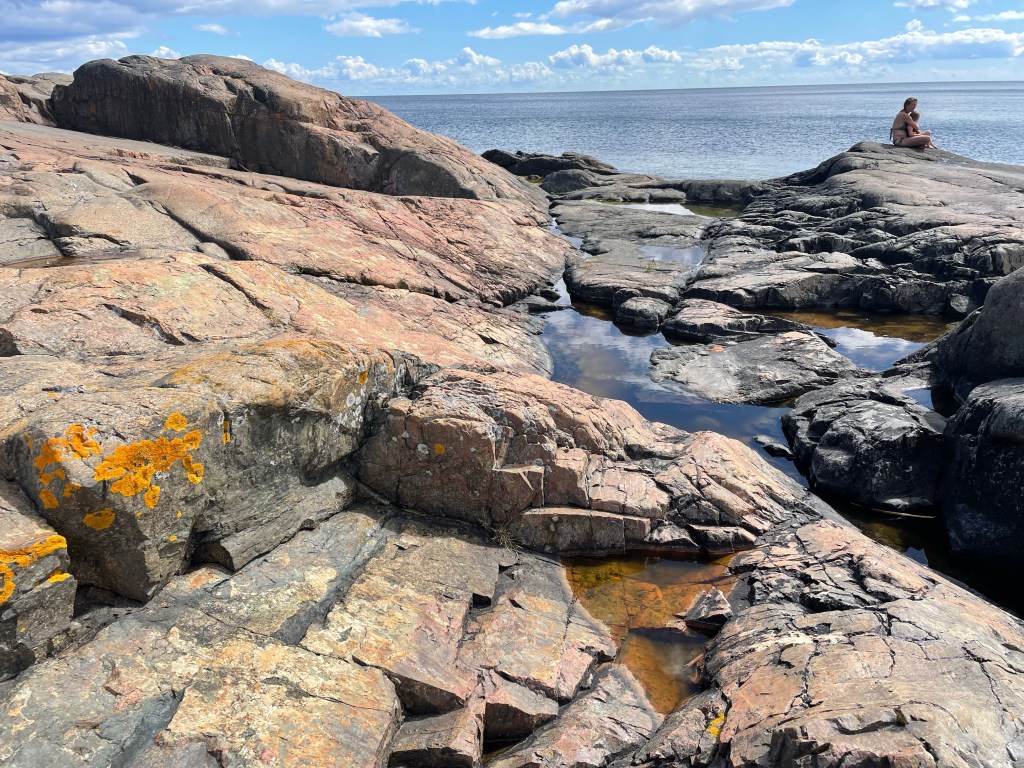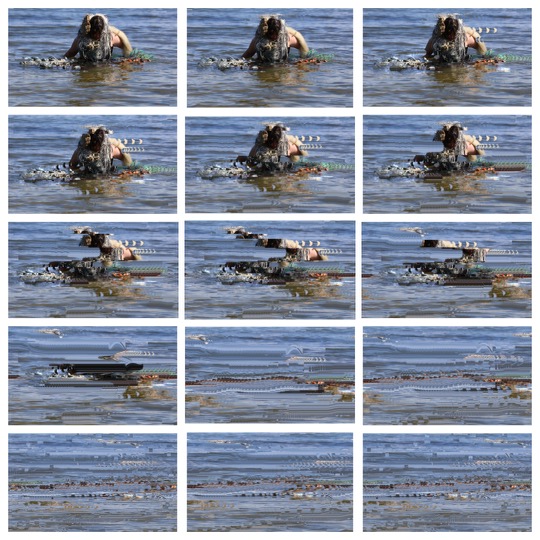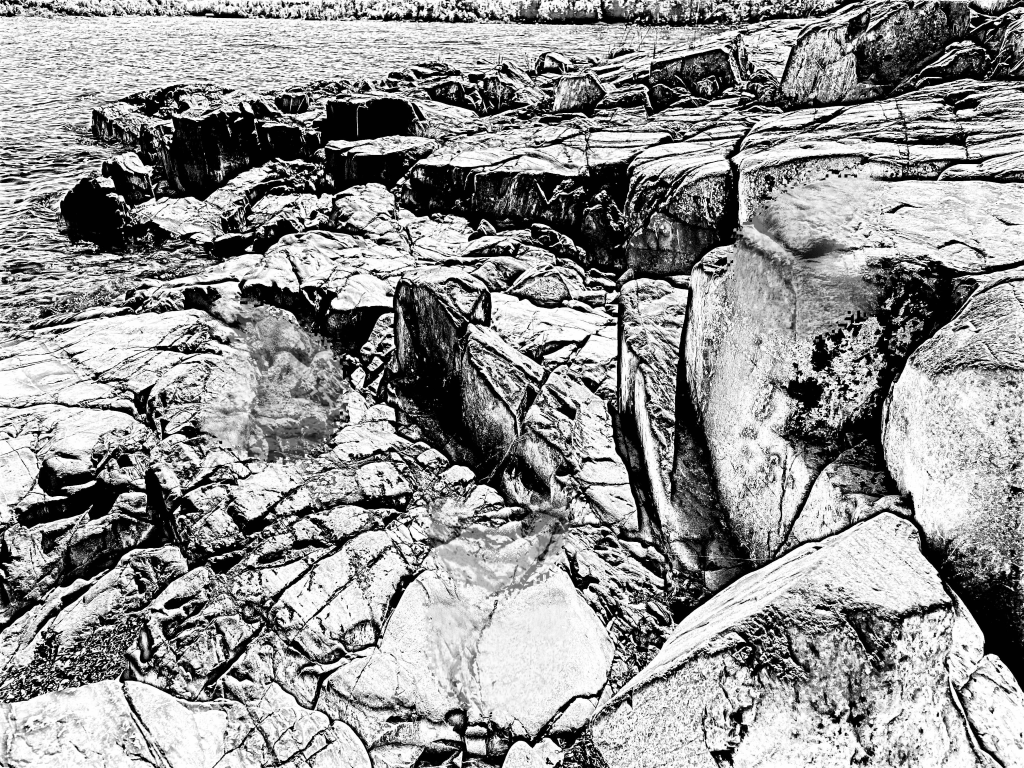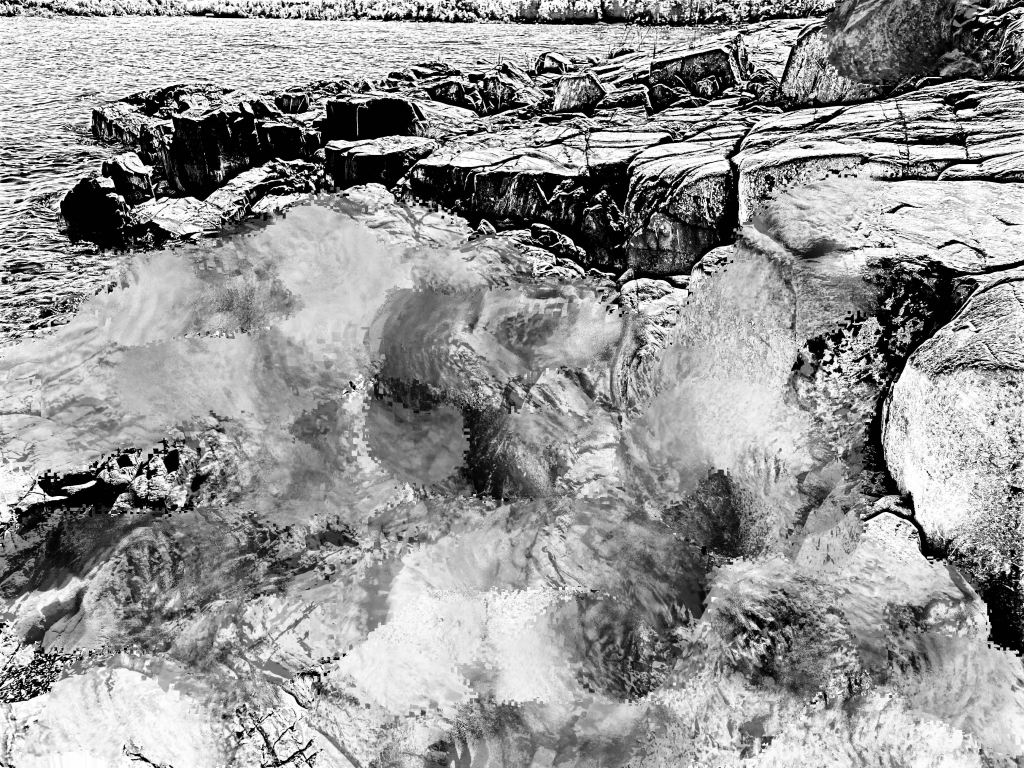Click above for an audio narration of the final essay, as published in Havet Som Omger Oss. Below, you’ll find the essay and visual components in a more primordial state.
I. Prologue
How can I describe my longing for the sea?
A doctor once described my cells as parched and drowning. Graced with a complexity of genetic miscalculations, my body expresses water, and its absence, profoundly. Within my tissues, looping cycles of inflammation and malabsorption wreak havoc. In a lifelong recurring dream, I feel this watery tension as a constant pull towards water and the open sea.
There are names for my medical conditions, letters and pills to quiet the constellation of symptoms. But towards the end of living well I find it’s more practical to tune in to other, softer ways of being. Seeking the silenced and forgotten knowledges between the body and the natural world, my journey often leads back to the edge of land and sea.

I. The Sound of Stone, Softening
The sound of a rock tumbler is a little louder than a white noise machine, closer to a clamoring indoor fountain, and, as described by my friends, completely maddening. In Brooklyn, I keep one in the closet of my tiny apartment. muffled by a box of sweaters, it rolls on through the days and nights, sending watery rumblings vibrating through thin walls and across floorboards.
I find myself soothed by the constant rhythm of stones tumbling through water, knowing that even as they clash through a cloud of grit, they are in the process of smoothing one another to a glimmer. It all feels cooperative, creative, productive- a reminder that allowing my own body to rest won’t cease the planetary vibrations of productivity. Something, somewhere is always developing, re-forming, changing.
When I was invited to the island of Singö for the summer to work with the sea, I arrived with the excitement of stones tumbling through my head. I wondered, If a plastic tub of water can have such a gravitous effect, what happens when we scale up to the size of the sea? What sensations can a body learn to absorb from this magnitude of watery presence?
Knowing that my time here is limited, I hope to absorb the sense of the softening sea. I want to take it with me somehow, tuck the feeling away to bring out on a landlocked day. I try to impress the pulse of the water into myself, the feeling of even flow against both sides of the skin. The feeling of weightlessness, of ease, of being included and submerged in constant, tangible change…

Every body held by the water is altered; Water is altered by every body it holds.
Whether made of flesh and blood, or mineral and earth, the dialogue between body-and-water speaks of transformation, coevolution, reciprocity. Beneath the tumble of every wave, there’s the sound of stone bodies, softening into the sea…

II. How the Sea Softens
I’ve noticed a particular and graceful intimacy on this island between stone and sea. Each a kind of body moving at its own liquid pace, they carry, hold and shape one another. In partnership, stone-bodies and sea-bodies co-witness and collaborate in cycles of time and change.
Here, the stones with the most perceptible sense of softness are the cliffs, whose slopes ease gradually into the clear cool sea. The smooth edges of these stones seem to call out for bodies to linger, to rest among the curves of their sloping contours. Even the waves seem softened here, lapping tentatively, they slide up the cliff face like silk sheets fluttering in the wind.

Geology explains that the hardness of a stone determines it’s ability to withstand eroding forces of wind and water. Soft stone crumbles quickly. Harder stone, resisting time and the elements, sustains with softened edges.
The harder the stone, the smoother the surface…
The smoother the surface, the softer the edges appear…
The hardest stones with the softest-seeming edges, hold the most enduring histories
(everything held by the water is changed…)
But what of our own bodies, complete with minds full of sharp edges and harsh particularities? If we could spend enough time being with the sea, would these edges soften too?

III. Interlude
ii
See how the body moves with the sea. See how the edges soften.
To be with the sea, we move with the sea.
When we hold the sea we are held by the sea.
easing into the motion of the sea, we unfurl, evolve, and soften
“The sea, it gives you the feeling, of just— (she clasps her hands to her chest), ahhhhh.”

IV. On Edges
One woman visiting my studio was particularly troubled by the idea of softening edges. She became adamant that as citizens in human society we need our edges to stay sharp.
It is lifelong work to make the boundaries and beliefs that define us, she explained. Why would I want to soften what I’ve struggled hard to build well and strong?
True enough. But why do we believe that something soft cannot also be powerful? The stones teach us that it takes an essential and persisting strength to soften, and not completely dissolve.
—



The Sea Gives, and the Sea Takes Away
—
“I have been thinking, maybe soft is the wrong word”
I’m sitting on the local cliff with my friend and curator. She’d been speaking with her 80 year old mother about my project. After thinking a while on whether the sea made her feel soft, her mother, who’s also particularly attuned to language, the body and the sea, said that softness is the opposite of what she feels.
My friend explains- I think what she was describing was feeling of reverence towards the sea. The word she used is something like humbled, to witness something so vast and so much larger than herself. She said that the sea here, while it may look calm, we should not forget that it is powerful.






Could the humbling pull of the sea’s vastness be a reminder that we are soft, and will always be soft, in comparison? Maybe what the sea calls for in us is an acceptance, a relinquishing of the edges we’ve drawn to define ourselves in separation from the world around us.
Then again, the sea’s proclivity to soften is the very same force that breaks things apart.
V. Hard and Strong and Soft and Weak
In quarry-terms, When a stone is too soft for industrial use, it is called ‘weak’ Around Singö, these [soft, weak] landscapes are known to geologists as a deformation zone.
To diagnose this zone, Geologists point to vulnerable faults (sårbar förkastnings), fragile seams (sköra söm ), sinuous veins (ådra slingrande) and jagged edges (kanter) in the stone landscape.
I find that some scientific rationalities are clarified in the process of translation. From English to Swedish, the word vulnerable stems more directly from its latin root, translating literally as easily wounded.
What constitutes a wounded stone?
A crack, a fold, a cliff, a landslide?

—
Vulnerability, weakness, softness, deformity, wounds, faults… these words shape much of the data for this landscape. And yet, standing barefoot on cliffs that shrug so gently into the surface of still water, my body registers the stone’s strength and softness as equally profound. What can be learned from these stones using just the bottoms of the feet? How does it feel to be a part of this place? How does the place itself feel? What kind of language has the words granting access to these unspoken vocabularies of being?
One morning, I invited some friends to describe the stones and the sea of Singö in their own words:
“This stone has many sides, it is pluralistic”
“My stone has a shell, it is organic and changing”
“It is an eye, it is history”
“The stone is without end”
Again, the process of translation adds unexpected flavors to these impressions. But of course each word can be translated in so many ways…

It’s true, that the words we use to describe our world shape our ways of being with that world. How we choose to name and define our surroundings determines the lessons and meanings those surroundings will offer to us.
Strong stones, soft edges, enduring histories.
In the language of ecology, what is known as the deformation zone of Singö becomes an emergent coast.
Perhaps it’s not only our bodies, but our systems of understanding, that could use a bit of softening.
—-
See how bodies change with the sea: Surfaces smooth, edges soften. Water changes bodies, bodies hold the histories of that change. Find a stone by the water. Place the stone on your body, or your body on the stone.Spend time in one another’s company. At the cool lapping edge of the sea, gather a sense of an edge softening, of a form evolving, of flow, of ease, of the comfort to be had in the constancy of change.
—
Special thanks of course to Anna Viola, Anneli, Sarah, Jackie and Stuart, and everyone else who shared their stories and paved the way for my own soft body to access to the sea.

Incredible writing and study of the strength of all surrounding us; stones , but the power of the sea is overwhelming. I love this study
LikeLike